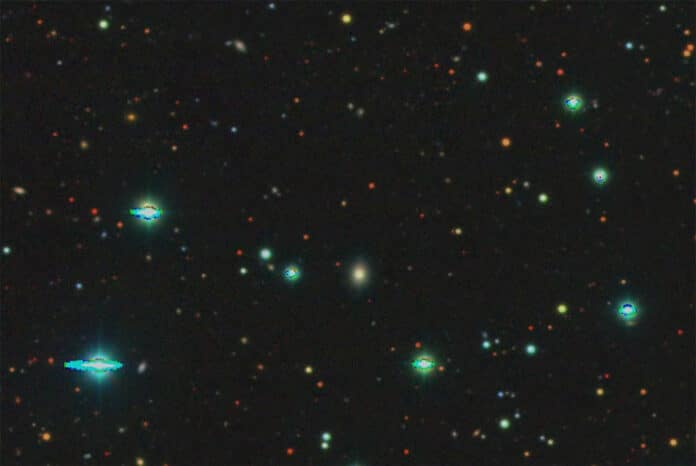A new, fully automated artificial intelligence (AI) tool has successfully detected, identified, and classified its first supernova. This is the first time such a feat has been achieved through automation.
Developed by an international collaboration led by Northwestern University, the new Bright Transient Survey Bot (BTSbot) system could rapidly accelerate the process of analyzing and classifying supernovas and bypass human error.
Humans currently work hand in hand with robotic systems to detect and analyze supernovae. According to the BTSbot team, humans have spent an estimated 2,200 hours visually inspecting and classifying supernova candidates in the past six years. The new tool can redirect this precious time toward other responsibilities in order to accelerate the pace of discovery.
“For the first time ever, a series of robots and AI algorithms have observed, then identified, then communicated with another telescope to finally confirm the discovery of a supernova,” said Northwestern’s Adam Miller, who led the work. “This represents an important step forward as further refinement of models will allow the robots to isolate specific subtypes of stellar explosions. Ultimately, removing humans from the loop provides more time for the research team to analyze their observations and develop new hypotheses to explain the origin of the cosmic explosions that we observe.”

Currently, robotic telescopes repeatedly image the same sections of the night sky, searching for new sources that were not present in previous images. When these telescopes come across something new, humans then take over to investigate further.
“Automated software presents a list of candidate explosions to humans, who spend time verifying the candidates and executing spectroscopic observations,” Miller said in a statement. “We can only definitively know that a candidate is truly a supernova by collecting its spectrum – the source’s dispersed light, which reveals elements present in the explosion. There are existing robotic telescopes that can collect spectra, but this is also often done by humans operating telescopes with spectrographs.”
The team of researchers created the BTSbot to eliminate the need for human intervention. To develop this AI tool, the team trained a machine-learning algorithm with over 1.4 million historical images from nearly 16,000 sources. These sources included confirmed supernovae, temporarily flaring stars, periodically variable stars, and flaring galaxies.
Researchers tested the BTSbot using a recently discovered supernova candidate called SN2023tyk. The supernova was first found by the Zwicky Transient Facility (ZTF) robotic telescope on Oct. 3. Sifting through ZTF’s data in real-time, BTSbot found SN2023tyk on Oct. 5. After that, the BTSbot automatically requested the potential supernova’s spectrum from Palomar Observatory, where another robotic telescope (SED Machine) performed in-depth observations to obtain the source’s spectrum.
Once it was determined that the candidate was a Type Ia supernova, the automated system publicly shared the discovery with the astronomical community on Oct. 7.
“The simulated performance was excellent, but you never really know how that translates to the real world until you actually try it,” said Northwestern’s Nabeel Rehemtulla, who co-led the technology development with Miller. “Once the observations from SEDM and the automated classification came in from SNIascore, we felt a huge wave of relief. The beauty of it is that once everything is turned on and working properly, we don’t actually do anything. We go to sleep at night, and, in the morning, we see that BTSbot and these other AIs unwaveringly do their jobs.”
